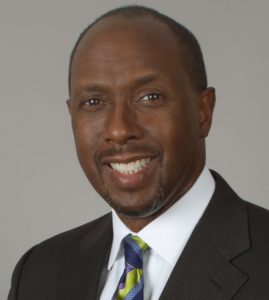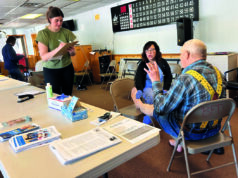
Dramatic increases in rates of diabetes—particularly among Black females—through 2060 underscore the importance of a multidisciplinary team approach to limb salvage, according to Vincent Rowe, MD, professor of vascular surgery and endovascular therapy in the Keck School of Medicine at the University of Southern California (USC), Los Angeles.
Rowe was speaking before the Pacific Northwest Endovascular Conference (PNEC) in Seattle during which he made the case for the multispecialty method—why it works and how other centers might go about embracing it rather than fighting it. To that end, he informed the PNEC gathering (May 27–28), when he first started to talk on the topic a few years ago, his institution did not have such a limb salvage program, leading him to declare that his talk should actually be entitled, “How we realized we needed to build one.”
An overall growth in the number of people developing diabetes looms large, explained Rowe. “We found out that we needed the program when we started seeing a lot cases such as this case here,” he said, pointing to a slide depicting major tissue damage to the foot. “These are cases of combined problems with circulation and the foot in terms of tissue loss and deep infection. The reason why we were seeing more of these things was because of the exponential growth of diabetes.”
Rowe referenced some key statistics: More than 34 million people of all ages—about one in 10—have diabetes, and 88 million adults, or one in three, have prediabetes. Diabetes complications are increasing for young adults aged 18 to 44 and middle-aged adults aged 45 to 64. Diabetes is more common among Asians, non-Hispanic Blacks, and Hispanics than non-Hispanic whites. Nearly one in five adolescents aged 12 to 18 and one in four young adults aged 19 to 34 have prediabetes
“The patients we have talked about, mainly for peripheral vascular disease, who have worse outcomes are Black and Hispanic,” Rowe continued. “We’re seeing that diabetes is more common in that group. This is not only going to increase the complexity of these patients with diabetes, but it’s going to make the overall outcomes that they have worse, because there will be more of them. It’s sort of a doubling project, where there’s going to be more patients with the problem and then more disease presence.”
Referencing sourced data, Rowe took a look at the pediatric population, explaining: “We’re dealing with a more diverse nation. The total population of people considered minorities is about 38%. But for children under five, it’s about 50%. That’s from 2014, so I’m sure that has increased. We are going to have a more diverse nation and we have to be prepared for that, especially if the diversity is involving patient groups that are at risk for diabetes. We have tracked the increase in diabetes up to 2060, and the prevalence was shown as going to increase, especially a prediction among Black females that there was going to be a huge increase, and an increase in those identified as Black males. These groups are going to be the ones we’re dealing with in terms of trying to treat their lower-extremity problems.”
The argument in favor of a limb salvage program extends to five-year mortality rates among patients who undergo a major amputation, noted Rowe. These patients are more likely to die in five years than people with a host of cancers, excluding lung cancer. “Once you deal with a patient who gets an amputation, their life expectancy goes down dramatically.”
At the outset of the program at USC, the various specialties were siloed. “When we looked at things, we just saw them differently, and couldn’t agree,” he said. Then the BEST-CLI (Best endovascular vs. best surgical therapy in patients with critical limb ischemia) trial came along, highlighting the need for two different specialties to be involved with CLI patients in some of the major medical centers.
“We wanted to be a part of the trial, so in 2014 it forced myself and a cardiologist to join forces,” Rowe explained. “Since we did that, under the aegis of the trial, we began working much closer together, and doing better for our patients as a team.”
In the meantime, Rowe observed, since the turn of the century the number of publications dealing with the multidisciplinary approach to limb salvage has skyrocketed. Most of those studies show a lowering of amputation rates after the establishment of a limb salvage program, Rowe added. The USC Limb Salvage Center contains vascular surgeons, interventional cardiology, vascular medicine, a nurse practitioner, a research coordinator, fellows from vascular surgery and vascular medicine, podiatry, plastic surgery, wound care specialists, endocrinology practitioners and nutritionists, among others. Crucial roles are played by podiatry and plastic surgery, Rowe said, along with wound care, nutrition and physical therapy. “And I don’t think we use this team enough: the endocrine specialists.”
David Armstrong, DPM, co-director of the USC Limb Salvage Center, dubbed the service the “Hot Foot Line.” Patients call the line, with subsequent wounds assigned to podiatry if they bear good circulation and are mainly due to infection, and sent to vascular surgery should there be an issue with circulation. Rowe and colleagues compared patient outcomes from before the start of the program when practitioners siloed, to afterwards when they were combined into a limb preservation clinic.
“We saw benefits in the amputations rates in high amputations rates, or high up the leg, and we saw a decrease in low amputations as well. We also saw an improvement in the metric from the high-to-the-low ratio.”
The USC team’s data is not yet published but Rowe and colleagues conclude that the multidisciplinary approach to limb salvage bears a number of benefits, including in amputation rates and length of stay. Rowe also touched on limitations. “One of the main ones is staffing and clinic space, as well as operating time, because we end up doing a lot of shared procedures,” he said. “I’ll do something to help the circulation, and then the podiatrist will come in and clean up a part of the foot, or do a partial foot amputation, all in the same setting, so it prolongs the operating time.”












